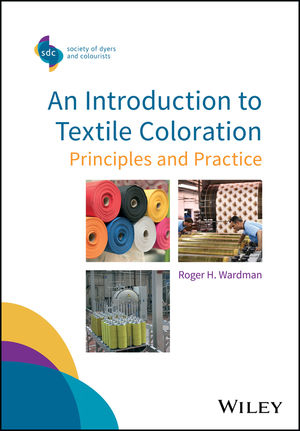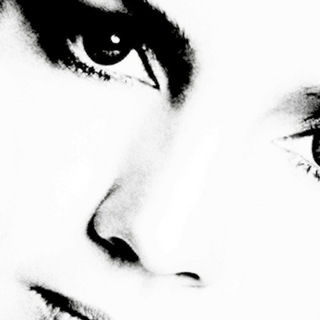
An Introduction to Textile Coloration
John Wiley & Sons Inc (Verlag)
978-1-119-12156-5 (ISBN)
- Titel z.Zt. nicht lieferbar
- Versandkostenfrei innerhalb Deutschlands
- Auch auf Rechnung
- Verfügbarkeit in der Filiale vor Ort prüfen
- Artikel merken
An Introduction to Textile Coloration: Principles and Practice
The Publications Committee of the Society of Dyers and Colourists (SDC) has been aware for some time of the need to produce a book at an introductory level aimed at personnel working in textile dyeing or printing companies as well as those interested in entering into the field. The SDC runs a course for dyehouse technicians leading to the award of its Textile Coloration Certificate and this book is intended to be helpful for candidates following the course. Additionally, it will be helpful for professionals in textile companies who do not have a strong scientific background, so that they may attain a better understanding of the chemical principles of colour application.
Starting with the basic science underlying dyeing and printing processes, this comprehensive book explains the fundamentals of dye and pigment chemistry and the various application techniques and processes. It offers chapter coverage of the general chemistry related to textiles, textile fibres, chemistry of dyes and pigments, industrial coloration methods, textile printing, theoretical aspects of dyeing, the measurement of colour and fastness testing. Reference is made to developments that have taken place in the coloration industry in recent years, not least of which have been the challenges imposed by the drive towards environmentally-friendly processes and restrictions on the use of certain chemicals.
An Introduction to Textile Coloration: Principles and Practice
Covers atomic structure, chemical reactions, and acids, bases, and salts
Explains the nature of fibre-forming polymers and the conversion of synthetic polymers into fibre filaments
Educates on the classification of colorants and the commercial naming of dyes and pigments
Introduces readers to the dye application processes and dyeing machinery
Instructs on dye aggregation, factors affecting colour appearance, the principles of colour fastness testing, and more
“…this is the sort of book any dyer, technician, student, academic will want to always have as an ready reference to everything pertaining to textile coloration.”
Richard S. Blackburn, School of Design, University of Leeds, Leeds, LS2 9JT, UK
Roger H. Wardman was formerly Head of School of Textiles and Design, Heriot-Watt University, UK and is a Fellow of the Society of Dyers and Colourists.
Society of Dyers and Colourists xiii
Preface xv
1 General Chemistry Related to Textiles 1
1.1 Introduction 1
1.2 Atomic Structure 1
1.3 Periodic Table of the Elements 4
1.4 Valency and Bonding 6
1.4.1 Giving or Receiving of Electrons: Formation of Ionic Bonds 6
1.4.2 Sharing of Electrons: Formation of Covalent Bonds 8
1.4.3 Secondary Forces of Attraction 10
1.5 Chemical Reactions 13
1.5.1 Types of Chemical Reaction 13
1.5.2 Rates of Chemical Reactions and Chemical Equilibria 14
1.5.3 Effect of Temperature on Rate of Reaction 16
1.5.4 Catalysts 17
1.5.5 Thermodynamics of Reactions 19
1.5.5.1 The First Law of Thermodynamics 19
1.5.5.2 The Second Law of Thermodynamics 20
1.5.5.3 The Third Law of Thermodynamics 21
1.5.5.4 Free Energy 21
1.5.5.5 Interpreting Thermodynamic Data 22
1.6 Acids, Bases and Salts 23
1.6.1 Acids and Bases 23
1.6.2 The pH Scale 23
1.6.3 Salts and Salt Hydrolysis 24
1.6.4 Buffer Solutions 25
1.7 Redox Reactions 26
1.8 Organic Chemistry 27
1.8.1 The Hydrocarbons 27
1.8.1.1 Aliphatic Hydrocarbons 28
1.8.1.2 Aromatic Hydrocarbons 30
1.8.2 Functional Groups 32
1.8.3 Important Functional Groups of Aliphatic Compounds 32
1.8.3.1 Halides 32
1.8.3.2 Alcohols 33
1.8.3.3 Carboxylic Acids 34
1.8.3.4 Esters 35
1.8.3.5 Aldehydes and Ketones 36
1.8.3.6 Ethers 36
1.8.3.7 Amines 36
1.8.3.8 Cyano and Nitro Groups 38
1.8.4 Important Functional Groups of Aromatic Compounds 38
1.8.5 Important Compounds in Textile Dyeing 40
1.8.5.1 Sequestering Agents 40
1.8.5.2 Surface‐Active Agents (Surfactants) 41
1.8.5.3 Carriers 42
1.9 The Use of Chemicals by Industry 43
1.9.1 Reach 43
1.9.2 Effluent Disposal 44
2 Textile Fibres 47
2.1 Introduction 47
2.2 Nature of Fibre‐Forming Polymers 51
2.3 Properties of Textile Fibres 54
2.4 Mechanical Properties of Textile Fibres 54
2.4.1 Fibre Length 54
2.4.2 Fibre Fineness 54
2.4.3 Fibre Strength 55
2.5 Chemistry of the Main Fibre Types 57
2.5.1 Cellulosic Fibres 57
2.5.1.1 Cotton 57
2.5.1.2 Chemistry of Cotton 58
2.5.1.3 Morphology of Cotton 60
2.5.1.4 Properties of Cotton 62
2.5.1.5 Organic Cotton 64
2.5.2 Other Cellulosic Fibres 65
2.6 Protein Fibres 65
2.6.1 Wool 66
2.6.1.1 Chemistry of Wool 66
2.6.1.2 Morphology of Wool 70
2.6.1.3 Properties of Wool Fibres 72
2.6.1.4 Ecological Aspects 74
2.6.2 Hair Fibres 74
2.6.3 Silk 74
2.7 Regenerated Fibres 75
2.7.1 Early Developments 75
2.7.2 Viscose 76
2.7.3 Lyocell Fibres 77
2.7.4 Cellulose Acetate Fibres 79
2.7.5 Polylactic Acid Fibres 80
2.8 Synthetic Fibres 81
2.8.1 Condensation Polymers 82
2.8.1.1 Polyamide (Nylon) Fibres 82
2.8.1.2 Aramid Fibres 84
2.8.1.3 Polyester Fibres 85
2.8.1.4 Elastomeric Fibres 87
2.8.2 Addition Polymers 87
2.8.2.1 Polyolefin Fibres 87
2.8.2.2 Acrylic Fibres 89
2.9 Conversion of Synthetic Polymers into Fibre Filaments 90
2.10 Fibre Cross‐Sectional Shapes 92
2.11 Microfibres 93
2.12 Absorbent Fibres 94
2.13 Drawing of Synthetic Fibre Filaments 94
2.14 Conversion of Man‐Made Fibre Filaments to Staple 96
2.15 Imparting Texture to Synthetic Fibres 96
2.16 Fibre Blends 97
2.17 Textile Manufacturing 99
2.17.1 Yarns 99
2.17.2 Fabrics 99
2.17.2.1 Woven Fabrics 100
2.17.2.2 Knitted Fabrics 103
Suggested Further Reading 105
3 Chemistry of Dyes and Pigments 107
3.1 Introduction 107
3.2 Classification of Colorants 107
3.3 Colour in Organic Molecules 110
3.4 Classification of Dyes According to Chemical Structure 113
3.4.1 Azo Dyes 113
3.4.2 Anthraquinone Dyes 115
3.4.3 Methine and Polymethine Dyes 116
3.4.4 Nitro Dyes 116
3.4.5 Triarylmethane Dyes 117
3.5 Classification of Dyes According to Application Class 117
3.5.1 Dyes for Protein Fibres 117
3.5.1.1 Acid Dyes 117
3.5.1.2 Mordant Dyes 120
3.5.1.3 Pre‐metallised (or Metal‐Complex) Dyes 121
3.5.1.4 Reactive Dyes 123
3.5.1.5 Summary 126
3.5.2 Dyes for Cellulosic Fibres 127
3.5.2.1 Direct Dyes 127
3.5.2.2 Vat Dyes 128
3.5.2.3 Solubilised Vat Dyes 129
3.5.2.4 Reactive Dyes 130
3.5.2.5 Sulphur Dyes 134
3.5.2.6 Azoic Dyes 136
3.5.3 Dyes for Synthetic Fibres 137
3.5.3.1 Disperse Dyes 137
3.5.3.2 Basic Dyes 138
3.5.4 Pigments 139
3.6 Commercial Naming of Dyes and Pigments 141
3.7 Strength and Physical Form of Colorants 141
References 142
4 Industrial Coloration Methods 143
4.1 Introduction 143
4.2 Dye Application Processes 143
4.2.1 Wool Dyeing 143
4.2.1.1 Acid Dyes 143
4.2.1.2 Chrome Dyes 145
4.2.1.3 Pre‐metallised Dyes 147
4.2.1.4 Reactive Dyes 149
4.2.1.5 Summary 150
4.2.2 Cellulosic Fibre Dyeing 151
4.2.2.1 Introduction 151
4.2.2.2 Direct Dyes 152
4.2.2.3 Vat Dyes 154
4.2.2.4 Reactive Dyes 157
4.2.2.5 Sulphur Dyes 161
4.2.2.6 Azoic Dyes 162
4.2.3 Polyester Fibre Dyeing 162
4.2.4 Nylon Fibre Dyeing 167
4.2.4.1 Disperse Dyes 167
4.2.4.2 Acid Dyes 167
4.2.4.3 Reactive Dyes 170
4.2.5 Acrylic Fibre Dyeing 171
4.2.5.1 Basic (Cationic) Dyes 171
4.2.5.2 Disperse Dyes 172
4.2.6 Polypropylene Fibre Dyeing 172
4.2.7 Dyeing Fibre Blends 172
4.2.7.1 Wool Fibre Blends 172
4.2.7.2 Cotton Fibre Blends 174
4.3 Dyeing Machinery 176
4.3.1 Introduction 176
4.3.2 Dyeing Loose Fibre 178
4.3.3 Top Dyeing 179
4.3.4 Yarn Dyeing 180
4.3.4.1 Package Dyeing 180
4.3.4.2 Beam Dyeing for Yarns 183
4.3.4.3 Hank Dyeing 185
4.3.5 Fabric Dyeing 187
4.3.5.1 Winch Dyeing 187
4.3.5.2 Jig Dyeing 188
4.3.5.3 Beam Dyeing of Fabric 191
4.3.5.4 Jet Dyeing 192
4.3.6 Garment Dyeing 194
4.3.6.1 Side‐Paddle Machines 195
4.3.6.2 Rotating Drum Machines 196
4.3.7 Continuous Dyeing 197
4.4 Supercritical Fluid Dyeing 199
References 201
Suggested Further Reading 202
5 Textile Printing 203
5.1 Introduction 203
5.2 Print Paste Formulation 204
5.3 Thickeners 205
5.3.1 Natural Products 205
5.3.1.1 Starch‐Based Thickeners 206
5.3.1.2 Alginates 206
5.3.1.3 Xanthans 206
5.3.2 Modified Natural Products 208
5.3.2.1 Carboxymethyl Cellulose 208
5.3.3 Synthetic Products 208
5.3.3.1 Emulsions 208
5.4 Binders 209
5.5 Pigments and Dyes 209
5.5.1 Pigments 210
5.5.2 Dyes 211
5.6 Printing Screens 212
5.6.1 Flat Screens 212
5.6.2 Rotary Screens 213
5.6.3 Engraved Rollers 214
5.7 Stages of Printing 215
5.7.1 Transport 215
5.7.2 Fixation (Dye‐Based Prints) 216
5.7.3 Wash‐Off (Dye‐Based Prints) 217
5.7.4 Pigment Prints 217
5.8 Printing Styles 217
5.8.1 Direct Printing 218
5.8.2 Discharge Printing 218
5.8.3 Resist Printing 220
5.9 Printing Methods 221
5.9.1 Flat Screen Printing 221
5.9.2 Rotary Screen Printing 221
5.9.3 Copper Roller Printing 223
5.9.4 Heat Transfer Printing 224
5.9.5 Ink Jet Printing 225
5.9.5.1 Continuous Ink Jet Technology 226
5.9.5.2 Thermal Ink Jet Printing 226
5.9.5.3 Piezo Ink Jet Printing 227
5.9.6 Comparisons between Ink Jet Printing and Screen Printing 228
Suggested Further Reading 229
6 Theoretical Aspects of Dyeing 231
6.1 Introduction 231
6.2 Kinetic Aspects of Dyeing 232
6.3 Dye Aggregation 235
6.4 Diffusion 243
6.4.1 Measurement of the Diffusion Coefficient of Dyes 244
6.4.2 Activation Energy of Diffusion 246
6.5 Rate of Dyeing 247
6.6 Adsorption 250
6.6.1 Physical Adsorption 250
6.6.2 Chemical Adsorption (Chemisorption) 252
6.6.3 Adsorption Isotherms 252
6.7 Thermodynamic Information Derived from Equilibrium Studies of Dyeing Systems 256
6.7.1 Standard Affinity, Standard Enthalpy and Standard Entropy of Dyeing 256
6.7.2 Determination of Thermodynamic Values for the Three Dye/Fibre System Types 258
References 276
Suggested Further Reading 276
7 The Measurement of Colour 277
7.1 Introduction 277
7.2 Describing Colour 277
7.3 Additive and Subtractive Colour Mixing 278
7.3.1 Additive Colour Mixing 278
7.3.2 Subtractive Colour Mixing 279
7.4 The Colour Solid 280
7.5 Factors Affecting Colour Appearance 284
7.5.1 Light Sources 285
7.5.1.1 Colour Temperature of Light Sources 288
7.5.1.2 Standard Illuminants 288
7.5.2 Reflection 290
7.5.3 The Eye 295
7.6 The CIE System of Colour Specification 297
7.6.1 The Standard Observer 297
7.6.2 Specification of Surface Colours in the CIE XYZ System 299
7.6.3 Interpretation of Tristimulus Values 302
7.7 Applications of the CIE System 304
7.7.1 Colorant Formulation 304
7.7.2 Colour‐Difference Formulae 310
7.7.3 Assessment of Metamerism 316
7.7.4 Assessment of Colour Constancy 317
7.7.5 Colour Sorting 319
7.7.6 Measurement of Whiteness 321
7.8 Solution Colour Measurement 322
Suggested Further Reading 326
8 Fastness Testing 327
8.1 Introduction 327
8.2 Standards Related to Coloration 328
8.3 Resistance of Coloured Fabric to Harmful Agencies 330
8.4 Principles of Colour Fastness Testing 331
8.4.1 The ISO Standards Outlining the General Principles 331
8.4.2 Grey Scales 331
8.4.3 Standard Depths 334
8.5 Fastness Tests 336
8.5.1 Light Fastness Tests 336
8.5.2 Washing Fastness Tests 338
8.5.3 Rubbing Fastness 340
8.5.4 Other Fastness Tests 341
8.5.4.1 Fastness to Water 341
8.5.4.2 Fastness to Seawater 341
8.5.4.3 Fastness to Chlorinated Water (Swimming Pool Water) 341
8.5.4.4 Fastness to Perspiration 342
8.5.4.5 Fastness to Dry Cleaning Using Perchloroethylene Solvent 342
8.5.5 Miscellaneous Fastness Tests 342
8.6 Test Organisations for Sustainable Textile Manufacture 343
References 343
Appendix Some Textile Terms and Definitions 345
Index 347
| Erscheinungsdatum | 03.11.2017 |
|---|---|
| Reihe/Serie | SDC-Society of Dyers and Colourists |
| Verlagsort | New York |
| Sprache | englisch |
| Maße | 170 x 244 mm |
| Gewicht | 726 g |
| Themenwelt | Kunst / Musik / Theater ► Design / Innenarchitektur / Mode |
| Naturwissenschaften ► Chemie | |
| Technik | |
| ISBN-10 | 1-119-12156-6 / 1119121566 |
| ISBN-13 | 978-1-119-12156-5 / 9781119121565 |
| Zustand | Neuware |
| Haben Sie eine Frage zum Produkt? |
aus dem Bereich


